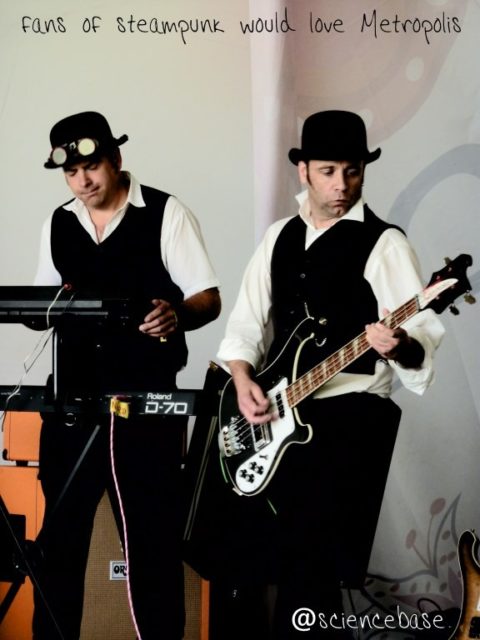Brass is the well-known alloy of copper and zinc, enamoured of Victorian engineers and modern-day steampunk fans. If one is to be as bold as brass, one might say where there’s muck there’s brass. One might be brassed off or be courageously insolent having the brass neck to say what is on one’s mind. Yet, one might not be worth a brass farthing although one can get down to brass tacks when one gets down to business working for the top brass. Of course, if there’s a real chill in the air one would certainly know that it’s cold enough to cause serious dislocation of the orbs from a brass primate.
As bold as brass
Anyway…brass was with us for so many years that we have so many sayings is what I am alluding to. It was the “go to” alloy when we didn’t want a spark, in an era before steel had come and gone and come again. It was common when the “tin” of fizzy drinks cans aluminium, was still rare and still considered a relatively precious metal. The pyramidal peak of the Washington Monument is capped with aluminium and the famously misnamed Statute of Eros, actually Anteros, in Piccadilly Circus, London, is also aluminium. But, back to the brass, switches, cogs and wheels, all doused in a veil of steam, all hard wearing, handles and knobs, fitments and fittings, ornaments and much more. Like I say, the favourite alloy and ally of the steampunks who imagine a world where Victorian technology progressed to the state of technology today but bypassed the electronics age and clung to the clunking and clanking of regulators and relays…all gleaming brass and polished walnut and not a dot of silicon other than between their toes as silica sand when they step from their candy stripe seaside bathing machines.
A conversation with musical friends whose surname is by chance “Brass” saw me double checking that brass is indeed Cu-Zn and not Cu-Sn (What was I thinking? They would know, for sure!) Of course, it is not pure copper and zinc, it can contain aluminium, arsenic, manganese, and phosphorus and have a varying formula that deviates from the three parts copper to two parts zinc standard. We were musing on a band name for when they perform together – CuZn, Copper-Zinc, Brassed Off, Brass Tax…but, in checking (on Wiki, where you only check facts you already know for certain) I re-learned that brass is not only a non-sparking alloy, but it is also an antimicrobial material.
Copper clue
It is the copper that endows brass with its microbicidal properties and it is lethal to many pathogens within minutes or hours depending on germ abundance. Although we had known this for centuries, it was not until 1983 that Phyllis J. Kuhn published details of the antibacterial effects of brass doorknobs. The copper causes membrane damage to bacteria, which is always a good way to kill them off.
Now, I thought I’d had a novel brainwave. In this age of bacterial resistance and hospital superbugs, might we not take a leaf from the steampunk manual and refit hospital doors, beds and rails, food trays and other equipment with brass handles to help halt the spread of MRSA and C difficile and their ilk. Well, it seems that in 2007, US Department of Defense’s Telemedicine and Advanced Technology Research Center (TATRC) had already had this thought and tested copper alloys for replacement fittings in several hospitals with great success, particularly in intensive care units. Preliminary data published in 2011, revealed that the “coppered” hospital rooms had a 97% reduction in pathogen levels compared to standard rooms. More importantly though this translated to a reduction (40% lower risk) in hospital-acquired infections, a leading cause of subsequent morbidity and mortality in patients. The critical point to note is that bacteria are unlikely to resist the lethality of sufficient copper, it will, so to speak, always burst their bubble.
A brassy future
A quick scan of the biomedical literature reveals that copper alloys are being investigated widely now for antibacterial applications. And while titanium and other metals have also been investigated as alternative alloying metals to the zinc of our old friend brass, it seems that many studies show that coppering up and not relying on stainless steel and plastics which mostly lack antibacterial activity, could be the way forward. To my mind though, they should throw out the titanium, ban the silicon smart phone, and kickstart with our brass toecaps a steampunk revolution. I’m sure Lovelace and Babbage were on to something with their brass computers and their hands were always so clean.
Have we got the brass neck to try?
References
Kuhn, Phyllis J. (1983) Doorknobs: A Source of Nosocomial Infection? Diagnostic Medicine
Schmidt, MG (2011) BMC Proceedings 5: O53. doi:Â 10.1186/1753-6561-5-S6-O53
Eser, OK et al Curr Microbiol. 2015 Aug;71(2):291-5. doi: 10.1007/s00284-015-0840-8
Farraris, S, Spriano, S Mater Sci Eng C Mater Biol Appl. 2016 Apr 1;61:965-78. doi: 10.1016/j.msec.2015.12.062
Muller, MP, MacDougall C, Lim M, J Hosp Infect. 2016 Jan;92(1):7-13. doi: 10.1016/j.jhin.2015.09.008
Ma, Z et al, J Mater Sci Mater Med. 2016 May;27(5):91. doi: 10.1007/s10856-016-5698-1
You can read the news version of this blog post in my Research Highlights column on ChemistryViews.org. You can find out more about the pictured band Metropolis here and more about my C5 band, which features Rog and Jo Brass here.
